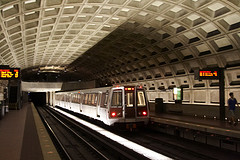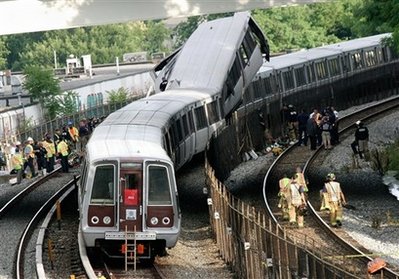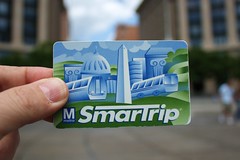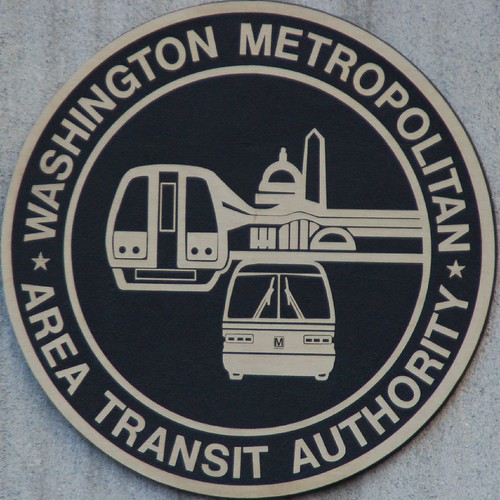(Source: Washington Post)

Forget about getting more money for Metro or whether to fire the general manager. The real issue is poor customer service: mysterious train halts, boarded-up escalators, rude station attendants.
That, at least, is the view of a bearded, 41-year-old former news reporter who writes the successful gadfly blog with the off-color title Unsuck DC Metro. He doesn’t want his name published, saying he’s received several threats over blog posts that embarrassed Metro employees. On that condition, however, he agreed to meet for lunch for his first full interview and discuss what he thinks ails Metro following the toughest three months in the transit system’s 33-year history.
The blogger, whose site is http://unsuckdcmetro.blogspot.com, bases his judgment partly on personal experience but mostly on the thousands of e-mails, comments, photographs and Twitter messages he’s received since he started in January. He gets more than 1,000 hits a day and has nearly 1,400 followers on Twitter — very near the approximately 1,650 following Metro’s own Twitter site.
General Manager John B. Catoe Jr., whose contract was just extended for three years, should pay attention. The bloggers have come to speak for Metro’s core customers and serve as a kind of collective conscience for the system.
To its credit, Metro responds to bloggers’ queries and, despite some understandable tensions, deals with them professionally. Other bloggers following Metro include Greater Greater Washington, Moving Momentarily, Why I Hate DC, Infosnack and DCist (along with such mainstream media blogs as The Post’s Get There, which features Dr. Gridlock).
Mr. Unsuck decided to blog after he changed jobs in November and began commuting regularly on the Orange Line. He was surprised when trains stopped regularly mid-trip and when, in his first week, he had to get off and wait three or four times when a train was suddenly taken out of service. Compared with foreign systems he knew, “I just felt there was something wrong with this one,” he said.
His blogging is part-time and unpaid. On slow days, he works on the blog for 20 minutes in the morning and 20 minutes after work. A lengthy posting might take several hours. The lunch I bought him (his share was $27.50) was the first material benefit he’d received.
Click here to read the entire article.
Note: Transportgooru congratulates fellow bloggers Greater Greater Washington, Moving Momentarily, Why I Hate DC, Infosnack and DCist for the great job they have done in getting the Metro to pay attention to the Metro riders’ issues. If anything, the community is glad to have these platforms to share their agonizing commuter tales & Metro’s woeful performance/behavior. Hat tip to all these bloggers for their community service!





![Reblog this post [with Zemanta]](http://img.zemanta.com/reblog_e.png?x-id=97fd249b-26b6-4015-8b64-6154bb207d08)



